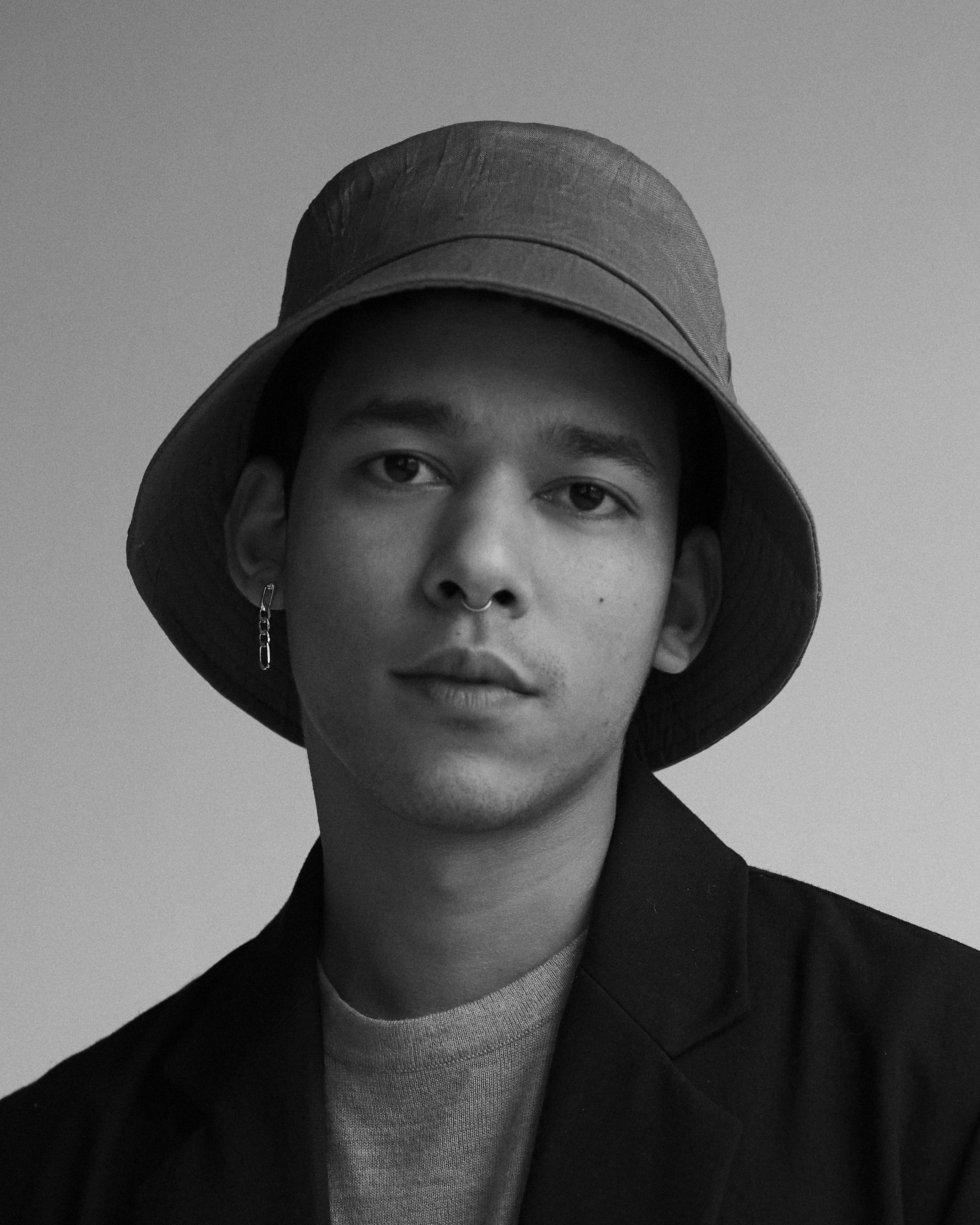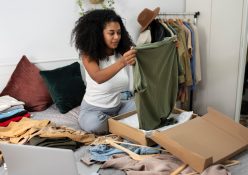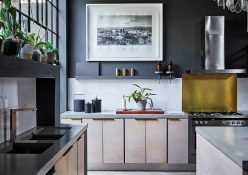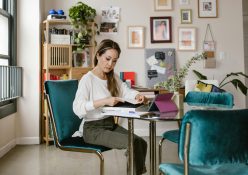An image-maker, art-lover, skincare addict, but first and foremost a stylist, let’s get to know Akim Jardine. A person who, over the years, has honed his craft to specialise in creative direction, styling and writing in the fashion and retail space.
You are a former fashion editor for Elle, a fashion stylist that has worked with many big brands, with so much more to your name. What has been some highlights of your career?
Some of my best moments have been meeting and working with the most incredible people. Dressing Sho Madjozi for the cover of ELLE and styling Darkie Fiction for a Superbalist commercial is definitely up there, but every project comes with a new set of talented, inspiring people from writers to photographers, dancers, actors and more, that make every single project special.
What have been some of the challenges you have faced in the fashion industry and how did you overcome it?
I think a constant challenge in our South African industry (and abroad) are access and representation for BIPOC. For one, I feel that access is gatekept by an old guard of, yes, talented stylists and editors, but there is a strong sense of the white old guard not wanting to loosen their grip on power. I don’t come from a background that gave me access into the fashion industry, so it took some hustle and a lot of hard work, against sometimes difficult conditions, to find my way in and work my way up from being an intern. Still, I find that in some spaces people don’t want to recognise me or my work because I don’t look like, have the same means as, or carry myself like the archetype of a fashion stylist in South Africa. It’s been my plight to find BIPOC people in the industry to learn from, people like Kelly Fung and Bee Diamondhead… and I hope that I can be that for a younger generation of people wanting to find their way into fashion so that we can change the space together. Right now I think the platform The Directory on Instagram is doing incredible work in highlighting and supporting BIPOC creatives in Cape Town specifically, where the industry is largely white-dominated. I don’t think that I’ve overcome this issue personally. For as long as our industry has barriers to entry for brown and black people I will always work towards creating a more open and diverse industry.
When you have to style a person what are the first things you look for? How do you strategize and conceptualise a style or trend?
I always start with an intensive research phase. Whether I’m styling a fashion editorial or a commercial campaign it’s good to form a thorough idea of who the character is that I’m creating: I like to find versions of the character reflected in real life, in high fashion and on Instagram, and pull inspiration from there to form a broader understanding of the person I’m creating. Then, I consider the person that I’m styling, what can they carry confidently, what will work for their body type, what will elevate their personality and at the same time meet the brief for the character that I’m creating.
Are there any clothing items, shoes or accessories that you think should be in every person’s closet?
We’re all so different. I don’t think there’s anything we should all have in our wardrobes. A wardrobe is a very personal reflection of who you are, built around your needs, your style, your body… Do you know what I mean? With that said, I think a great quality basic white tee will go the distance.
What would you say is your signature style?
A bit of Scandinavian minimalism meets a bit of Japanese street style. I love anything boxy or voluminous – you’ll never catch me in a skinny leg, always straight… and tonal! I love wearing head-to-toe black, white, or beige.
If you are pressed for time what is your go-to outfit?
A pleated trouser, mid-weight cotton tee tucked in, an oversized leather jacket thrown over, leather boots, micro beanie. All black, obviously. Black is my safe space.
How do you build a budget-friendly wardrobe?
Depends on the budget… Haha. On a serious note, my best advice is to take a capsule wardrobe approach. Keep a stable of versatile, simple, impactful pieces, that you can mix-and-match, at the core of your wardrobe – these should be the best quality pieces so don’t be afraid of spending a bit of money on them. You want them to last a few years. Try to spend less on your trendy pieces – you know the exciting prints and colours that come into stores every few months. Those are not forever pieces and they’ll probably be out of the trend cycle by next year, so keep it cheap.
Sometimes the most frustrating thing about winter styling is trying to layer without the result becoming the abominable cloth-ball. What are some of your tips for layering thicker clothing items?
Ok, let’s solve layering forever. I find it’s pretty trial and error, you’ll never know what your layers are gonna do until you try them out, but some basic principles can make it so you don’t have to work too hard to get it right.
1) Watch your proportions. If your upper body has heavy, chunky layers, try to wear something slim, structured or tailored on your bottom half.
2) Make sure your base layers are fitted or skin-tight – loose layers are the enemy.
3) If you still feel like a pile of clothes on laundry day, try to pull attention to your waist by tucking your top in or belting the waist to add some structure.
What is your styling philosophy?
As cliche as it seems – less is always more. I believe that every piece of clothing should be considered carefully, paying attention to what a look is asking for, how it wants to be finished. While paying attention to technical details like proportion and balance are very important to me, but I try to never forget the emotion: What does the look say about the person? Does it feel good? Does it empower the person wearing it to be confident?
Is there a colour palette that you like to follow each season?
I like to pay attention to runway trends and what the shifts are in colour palettes, but also what the mood of the moment is, so it’s not really cyclical or repetitive per se. For this winter neutral colours still give us comfort and a much-needed safety, especially while we’re isolated at home. On the other end of the spectrum, it might be a good time to start playing with bold primary tones and standout neons – it’s not unusual that in sombre moments bright colours feel like a tonic to our dull state of mind and a good way to lift our spirits.
To all the aspiring stylists out there, what advice can you give to them?
Study, study study! It’s easy to make decisions based on gut feelings but the technical stuff stays as important as ever. Find stylists whose work you love and then obsess over it, study it, pick it apart to see what they did and try and figure out why they made those decisions, find the things that you would do differently – this will help you understand your unique point of view.
Reach out to local stylists that inspire you and ask them if you can work under them. This is the best way to learn about how the industry works, grind your teeth and get a foot in the door.
Lastly, this is hard work. It’s not all glitz, glam and front row at dazzling runway shows, sipping bubbles with models and designers. It’s ugly and sweaty and you have to be ready to put in the work, otherwise don’t bother.
Final questions, what fashion accessory can you not live without?
Oef. For anyone that knows me personally, it won’t be a surprise that I love headwear. It’s rare to ever see me without a beanie or a bucket hat. But my favourite finish to any look is a scent. Smell is very important to me as a way to either reflect my mood or to lift it.
Words: Thuveshnie Govender | Photography: Courtesy Images







